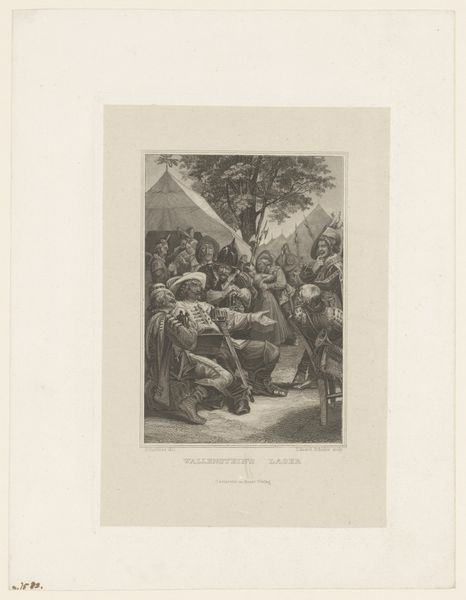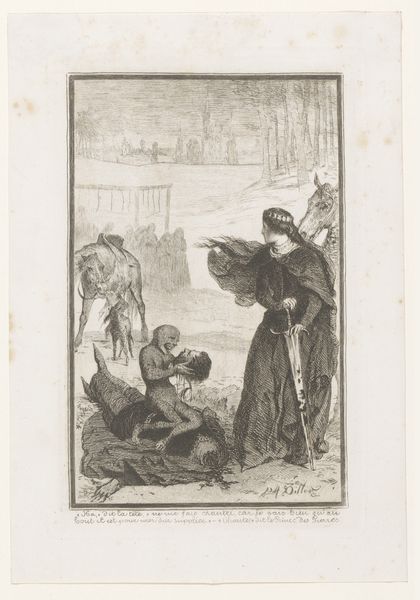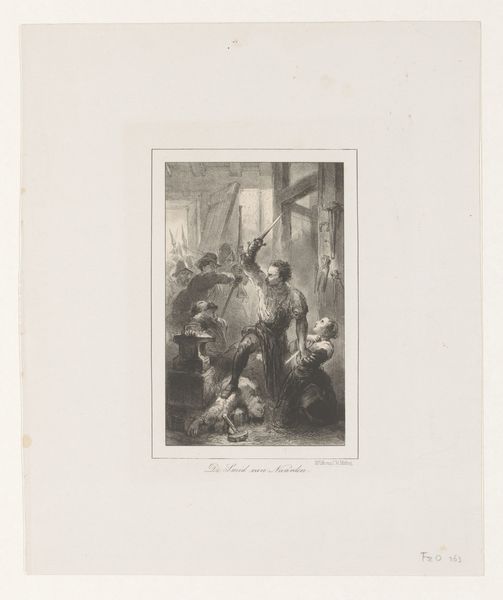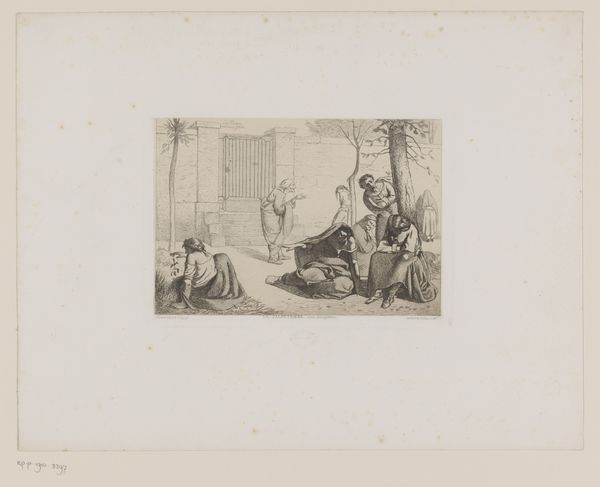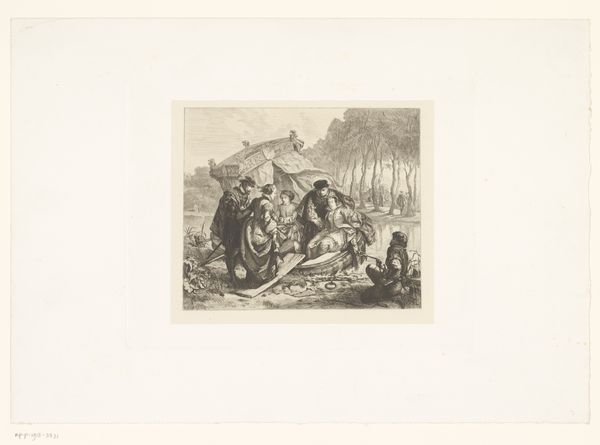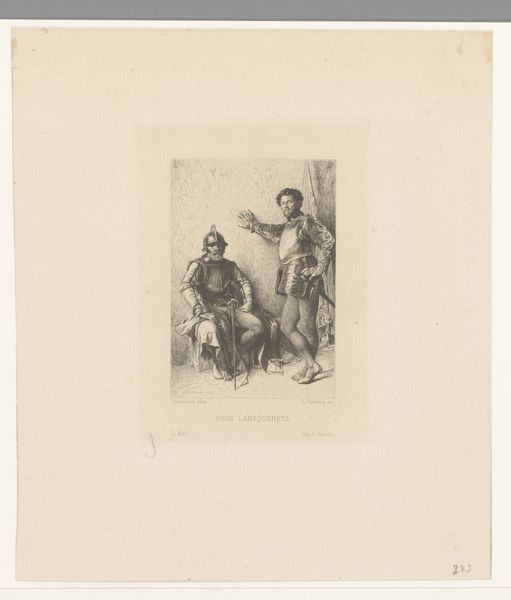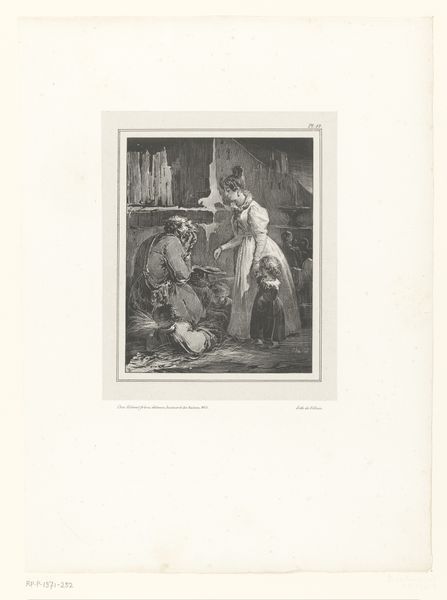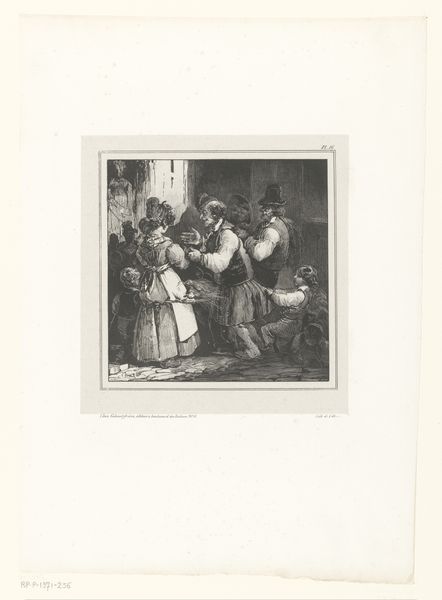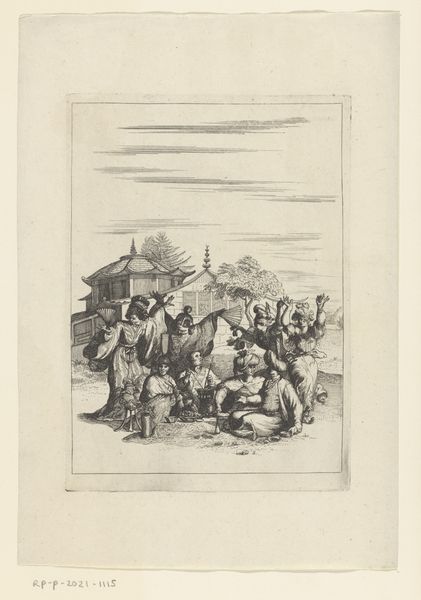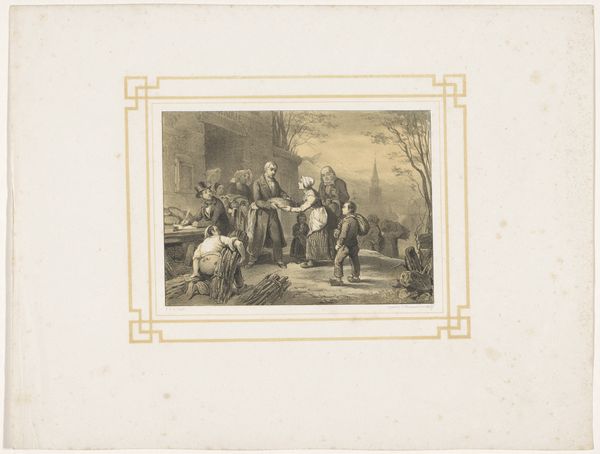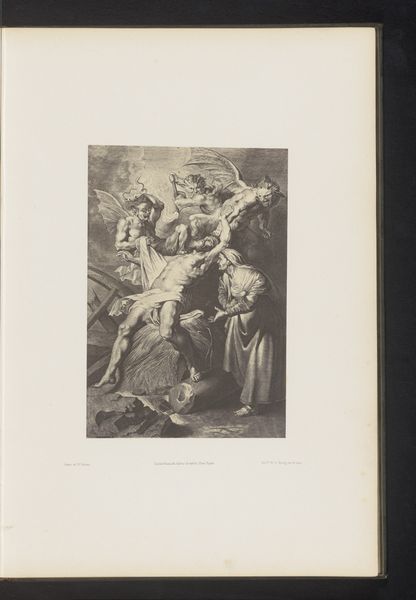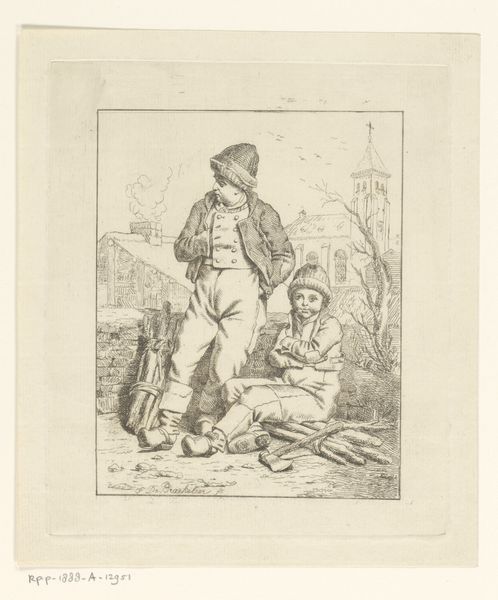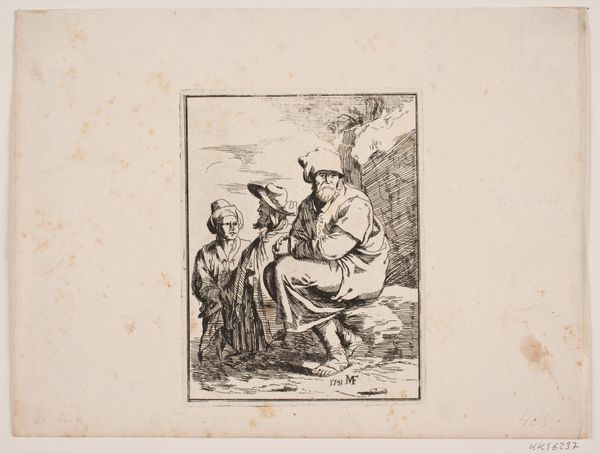
Vrouw met zwaard staat naast een lichaam waarvan het hoofd wordt vastgehouden door een duivelsfiguur 1861
0:00
0:00
adolphealexandredillens
Rijksmuseum
Dimensions: height 182 mm, width 118 mm
Copyright: Rijks Museum: Open Domain
Curator: Immediately striking, isn’t it? The mood feels almost biblical, theatrical. A high drama frozen in time. Editor: It is quite dramatic. We are looking at an etching made in 1861 by Adolphe Alexandre Dillens. The piece is called "Vrouw met zwaard staat naast een lichaam waarvan het hoofd wordt vastgehouden door een duivelsfiguur," which translates to "Woman with sword standing next to a body whose head is held by a devil figure." A mouthful, I know! And this piece now resides here at the Rijksmuseum. Curator: I love the way Dillens has rendered the central woman—strong, almost imposing with that sword. She seems like a figure of righteous fury, pointing towards something beyond the frame. There’s such a stark contrast between her assured posture and the macabre scene unfolding at her feet. I see tragedy but also almost… defiance. Editor: Right. And look at what she’s defying: the literal devilry embodied by that small, monstrous figure grasping the severed head. This piece seems steeped in allegorical meaning. The history of violence against the female body, perhaps, or a larger commentary on power and morality. Think of all of those histories connected with Joan of Arc! I am keen to situate Dillens' artwork into dialogues that confront structures of patriarchal domination and envision trajectories toward gender liberation, for example. Curator: Yes, there is so much at play. The devilish figure is also a very peculiar touch, isn’t it? Almost grotesque, which then emphasizes, for me at least, the fragility of human existence. The entire scene does convey that kind of darkness that maybe lurks beneath societal structures. Editor: And that sense of foreboding extends beyond the immediate horror. Look at the backdrop! The gallows or some sort of raising platform; the faint outline of the gathered crowd. Dillens seems keen to highlight the structures that uphold this violence, creating a disturbing and yet thought-provoking commentary. Curator: You know, looking at it, I am reminded a little bit about that kind of, I guess you would say the sort of theatrical staging often used by Mannerist painters, despite it being a print and not a painting. A historical scene, perhaps, infused with allegorical drama and dark imagination, not the real history itself. It has, despite its medium, this painterly quality that sets the scene very theatrically and creates quite a vivid impact on the viewer, regardless of the time era. Editor: Dillens has made us witness this tableau and demanded a moral reckoning. It's a complex, unsettling piece, prompting us to reflect not just on the scene itself but on the structures that enable such brutality to occur in the first place. And on whether it has improved for women through time. Curator: Absolutely, this artwork reminds us there is always so much more to the image than the initial scene. And that’s exactly what makes a powerful piece of art!
Comments
No comments
Be the first to comment and join the conversation on the ultimate creative platform.
